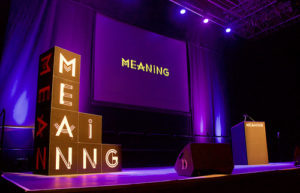Mary E. Marshall's Blog, page 29
August 31, 2016
Character Day
 There is something called Character Day coming up on Thursday, September 22nd. (Who knew?) It started in 2014 to begin a conversation about who we are – who do you want to be as a person – and spread to over 125 countries and over 6500 organizations. This year over 40,000 groups in 70 countries are already signed up to participate.
There is something called Character Day coming up on Thursday, September 22nd. (Who knew?) It started in 2014 to begin a conversation about who we are – who do you want to be as a person – and spread to over 125 countries and over 6500 organizations. This year over 40,000 groups in 70 countries are already signed up to participate.
From their website, “Character Day is a free annual day and global initiative where groups around the world screen films on the science of character development from different perspectives (including The Science of Character, The Adaptable Mind, and The Making of a Mensch), dive into free printed discussion materials, and join an online global conversation around the importance of developing character strengths (resilience, grit, empathy, courage, kindness)–all rooted in evidence-based research.”
Character Day is put on by a film company called, “Let it Ripple” and they provide all sorts of materials to get the conversation started including the films mentioned above.
For each of us as individuals, we should know ourselves and our characters. It’s always surprising to me, how many people don’t. It’s not an abstract concept, it’s who we are so why not talk about it? Why not spend some time really thinking through your values and owning whatever makes sense for you? A couple of weeks ago I talked about how grit is not enough and how empathy is a required characteristic for leadership. These are pieces of character, but not the whole picture. It’s very valuable as a leader to spend some time reflecting, understanding, and developing your character.
Organizationally, there is also a character. You have values, principles, and ways your organization behaves. How often are you looking at and evaluating this and what conversations are you having around it? September 22nd is a great opportunity to dig in. Joining in Character Day is a structured way to see what your people think, what they are saying, and how you can create a corporate or company character that is in line with your values.
What have you got to lose? Start the conversation.
The post Character Day appeared first on Mary Marshall // CEO Coach.
August 24, 2016
Letting Go of the Monkey Bars
 In several recent discussions with clients and with the Emerging Leaders class I teach at the SBA, an interesting example of a type of blockage to change has come up. Change happens around us all the time, every minute of every day. But rather than embracing the change, most of us spend our time trying to keep things the same or preserve what we have, leading to all sorts of outcomes that don’t really serve us.
In several recent discussions with clients and with the Emerging Leaders class I teach at the SBA, an interesting example of a type of blockage to change has come up. Change happens around us all the time, every minute of every day. But rather than embracing the change, most of us spend our time trying to keep things the same or preserve what we have, leading to all sorts of outcomes that don’t really serve us.
In business, it looks like this. You have a new opportunity that seems for all intents and purposes like it could be great for the company. But, (and there is always a but), it would require that you give up or change a current product line, process or client that you have been dependent on for years. You’ve developed an “attachment” to whatever it is and no matter how good this new idea or option is, the old one has you trapped.
The analogy I used in class was that it was like a kid on the monkey bars. You can’t move forward if you don’t let go of the bar in the back. Being stuck with one hand forward and one back is painful, especially if you decide to skip a bar and really go for it! The problem is unless you let go of the old, you are going to do one of three things: fall off, reach backward, or be stuck in the awkward in-between phase, which serves no one.
None of these is a good monkey bar strategy and none will work in business. We’re often so afraid of letting go of “what we know” or “what we have,” that we are afraid of moving forward and therefore will miss out on multiple opportunities. Businesses are not static, change is constantly happening in the marketplace and it’s a much stronger leadership position to choose your businesses’ direction consciously and proactively and make organizational changes as needed. The desire to hold onto the “known” is usually a strategy that will keep us in a no or low growth death spiral. Eventually landing on our backs in the sawdust staring up at the monkey bars wondering why that “safe” bar didn’t work this time.
You will need to let go of a lot of monkey bars as an entrepreneur, and it’s a good thing. You may not always grab the one you are reaching for successfully, but you will get back on and keep going until you reach the other side. Those businesses that got to “walk” to success vs crossing the monkey bars will never know how to repeat what happened. They often live in two states – fear that someone might find out they didn’t really do anything to make the success happen or a state of complete obliviousness that they were in the right place at the exact right time. It’s never replicable.
So whether it’s an outdated strategy, an employee you need to let go, a client or product line that is no longer profitable or serving the companies direction, let go of the monkey bar and move forward.
photo credit: At the playground via photopin (license)
The post Letting Go of the Monkey Bars appeared first on Mary Marshall // CEO Coach.
August 17, 2016
Grit is Not Enough
 In my last newsletter, I recommended the new book “Grit” by Angela Duckworth as a good read. It is. However, as Daniel Goleman points out in his recent article, grit is not enough.
In my last newsletter, I recommended the new book “Grit” by Angela Duckworth as a good read. It is. However, as Daniel Goleman points out in his recent article, grit is not enough.
He rightly suggests that although grit is a wonderful character to have in school and in life, it is not always indicative of leadership ability or skill. Take for example the superstar salesperson, the Olympic athlete or the solid performer in an organization. They all share an ability to “muscle” through anything, focus on the goal and achieve great things. However, it’s usually alone or worse, at the expense of others who try to help them or got in the way.
As with most things, it’s about balance. A leader who has grit will keep the company going in good times and in bad. But it isn’t the only thing that matters. What keeps a team together is empathy. As I was once asked, wouldn’t it be great if we all crossed the finish line together? That will not win the Olympic 200m sprint, but it will win in the business world.
Goleman states that without empathy, no one will follow the leader. And to make things happen inside an organization, you need a team, otherwise, you are a company of one. The emotionally intelligent leader has empathy, knows what it is and how to use it. Along with grit, this is a powerful combination.
We’ve all seen unsympathetic leaders. It’s the person who had an idea and doggedly pursued it to success regardless of the road kill along the way. It’s the highly paid hedge fund manager who is out to “win,” mostly for him or herself. For individual achievements, this works just fine. For pretty much anything else, you need a team around you who wants to follow and wants to contribute to everyone’s success. Often when companies promote the “superstar” they are dismayed when that person ends up winning, but can’t motivate a team and worse, has routine defections from team members jumping ship. They just can’t understand why everyone won’t do it “their way.” No empathy.
However, I have seen those with low empathy on the StrengthsFinder profile, actually be very good leaders. They have learned over time that in order to get things done, they need to be able to see things from another’s point-of-view. They work hard at understanding motivations so the job can get done – and they have a lot of grit to keep things on track along the way. It’s not a weakness to ask for help or be concerned about others’ feelings, it’s a strength. And when it comes to successful leadership, a lack of empathy is more deadly than a lack of grit, and you need both.
photo credit: where does these footsteps lead to ? via photopin (license)
The post Grit is Not Enough appeared first on Mary Marshall // CEO Coach.
August 10, 2016
Organizational Laziness
 Sometimes organizations get lazy. This happens when they have long periods of success and start to take it for granted. They assume that the customers and money will just keep coming in and they stop doing the things that got them to that point in the first place.
Sometimes organizations get lazy. This happens when they have long periods of success and start to take it for granted. They assume that the customers and money will just keep coming in and they stop doing the things that got them to that point in the first place.
How does this show up? It shows up in the most basic of ways. Not bothering to have an annual goal or strategic planning is usually the first step towards decline. If you don’t plan, things have a way of taking over that you never intended. Threats and weaknesses become more pronounced and opportunities and strengths go unnoticed. This becomes possible because the organization is financially sound so there is no real impetus to do anything differently.
The next way this shows up is in the “culture” or values no longer being emphasized and reinforced. This leads to an unintentional culture that doesn’t look at all like the organization first intended. This stems from a leader who is out of touch with what’s going and has no real understanding of what the employees are thinking or doing, let alone what the customers are saying. The values being lived change almost overnight when this happens. The challenge is that it takes longer to show up as a problem in sales and retention or recruitment of good employees.
Eventually, of course, it does show up in flat or declining sales revenue. This, in turn, leads to a loss of net revenue. At which point the leadership usually gets involved, most often in panic mode, and everyone starts wondering if the sky is falling. It’s not, but there is a serious crack in the foundational culture of the organization because collectively everyone has become lazy.
Profit hides a multitude of sins inside an organizationally lazy company. Lack of planning, lack of reinforcement of values through organizational structures, no employee development training programs, no reward programs and lack of leadership to even ask the questions. When the money is flowing in, no one looks too closely at the basics because money fixes, but also hides, a lot of problems.
It’s only when the money starts drying up that questions start to be asked, sometimes too late. In order to avoid this scenario, the first step is to have sound, basic business structures in place. Annual planning, goal setting, and reinforcement of the values and culture of the organization. These will be the early warning signs of shifts in the market, shifts internally or things that need tending, while the money is still flowing. The better the revenue and profits, the longer the company can go without looking at the roots.
Don’t wait until there is a crisis to do a health check on your organization. Have you become a little too “lazy” in some areas? No time like the present to get things back on track so that when a downturn or drop in revenues does come, (and it always does), you will be ready to weather the storm.
The post Organizational Laziness appeared first on Mary Marshall // CEO Coach.
August 3, 2016
Mission and Meaning
 A recent post in the NY Times discussed the importance of finding something you love to do for a living. I think most of us know this to be true, if you’re happy with what you’re doing, you tend to be more engaged, more productive and are generally a happier human being.
A recent post in the NY Times discussed the importance of finding something you love to do for a living. I think most of us know this to be true, if you’re happy with what you’re doing, you tend to be more engaged, more productive and are generally a happier human being.
What was most interesting was the notion that people tend to be happier when they work for an organization whose mission aligns with their views and beliefs. This is particularly true for Millennials, who for the first time, now outnumber baby boomers. What the company does and stands for matters. Inside of that, they can find jobs that work for them, that speak to their skills, talents, and interests.
As business leaders, this means our culture grounded in mission, vision and values is more important than ever for attracting and retaining top talent. It cannot simply be a slogan, a poster or empty words on the walls or in the employee handbook.
This means it needs to be lived and communicated every day. If you aren’t clear whether your employees understand what, why and for whom you do, you should start there. Walk around the company and simply ask. Go to the break room and ask. If you end up with a similar theme, you’ve probably got a good foundation to work with. If you get widely divergent responses, you have some work to do.
Where to Start
Start with your executive or management team and get very clear on the mission and values. We exist to do “what?” Grounded in what values and what do those mean? Have a description of each of your values words so that everyone is crystal clear about how and what they mean. Do not leave any room for ambiguity. Once you have those, then you can talk about the vision that your mission and values serve.
Don’t rush it, take some time and really listen to your people and make sure it’s compelling and most importantly true. Then figure out how you can live it in your organization. Where does it show up? How can you encourage and support employees to live it every day?
If you as the leader are not aligned, meaning your behaviors and those of your team do not align with the mission and values, it is as obvious as the emperor with no clothes on. You can’t fake your way through it. This will cause deep dissatisfaction in your workforce and regardless of whether or not they have the perfect job for them, they will eventually leave because for them, it will feel like a bad fit.
Once alignment is present, fitting people into jobs they love inside of the company’s mission, vision and values becomes much easier. With a happy and stable workforce, you have less turnover and far more productivity. So it really does make sense to pay attention to your mission, vision, and values because your workforce certainly is.
photo credit: Meaning 2015 – Stage ready via photopin (license)
The post Mission and Meaning appeared first on Mary Marshall // CEO Coach.
July 18, 2016
Hiring for Business Culture
 “Hire Character. Train Skill.”
– Peter Schutz
“Hire Character. Train Skill.”
– Peter Schutz
In this hyper-competitive environment where employers are battling for talent, the desire to shortcut the process and make an offer to someone is intense. However, hiring a cultural misfit will end up costing you so much time and money, not to mention aggravation, it’s rarely worth it.
Peter Schutz says hire for character. I call it hiring for values, but it’s essentially the same thing. Most companies have identified their values but rarely actually use them in the hiring process. Hiring is exactly the time to put them to good use and to really embed them in your company culture.
The first step is to make sure your hiring manager or managers know what the values are and hopefully, they embrace them. If they don’t, you need to sort that out first because hiring more people who have opposing values or simply don’t share the values of the company is a problem. Next, create 4-7 values-based behavioral questions and use them in every interview, multiple times. A person can generally make something up once, repeating the same exact lie is difficult so it’s easy to spot when someone is not truthful.
It’s important to be clear that this is not the same as screening for introverts, strengths or other personality characteristics, this is questioning for values. Here are a few examples of what I’m talking about (more available in my book, chapter 4 on Hiring):
Teamwork – Describe a situation where others who you were working with on a project disagreed with your ideas. What did you do?
Tenacity/Resilience – Tell me about a particular work related setback you have faced – how did you deal with it?
Creativity – Tell me about a time when you solved a problem in a unique or unusual way? What was the outcome? How did you feel about it?
Integrity/Honesty – Tell me about a time when your integrity was challenged, how did you handle it?
Adaptability – Tell me about a situation in which you have had to adjust to changes over which you had no control, how did you handle it?
First, you will get an idea of what their definition of the value is and second you will get an understanding of whether they “fit” your organizational culture or not.
Values and character are at the heart of an employee “fitting” into an organization. Assuming they come with the basic understanding, training or pre-requisites for the job, you can teach them any skills they may lack. Values, on the other hand, are hard-wired. Someone either believes a certain way, or they don’t. You can’t change them and you will end up letting them go because they don’t fit if you don’t screen up front.
photo credit: How to Earn Customer Loyalty By Focusing on Customer Experience via photopin (license)
The post Hiring for Business Culture appeared first on Mary Marshall // CEO Coach.
Minding your Business Culture
 Whenever you get that “feeling” that something is off in the company, you’re right. The key is finding and identifying the issue quickly before the business culture changes in a direction you did not intend.
Whenever you get that “feeling” that something is off in the company, you’re right. The key is finding and identifying the issue quickly before the business culture changes in a direction you did not intend.
Facebook is a good example of an organization that is very intentional about their culture. They don’t like office politics because they feel it poisons work life. It does. They have identified several tactics that work well to combat this, and admirably, they begin with the hiring process.
They look for people who are not empire builders, self-servers or whiners. They ask several behavioral based questions to determine people who might have these tendencies. One of the questions they ask is, “Can you tell me about four people whose careers you have fundamentally improved?” Brilliant! An empire builder would never take the time to help anyone, let alone four people. Everyone can make up one fake example, but four is difficult. Another excellent question, “What did you do on your very best day of work?” This immediately tells you what the person values.
Of course, we don’t always hire right so you have to be on the lookout when things are not going as well as they should be. Facebook has several tactics they use to help ensure their desired culture:
Take the incentive out of climbing the ladder – a lateral move is the way to learn and grow at Facebook.
Be open and transparent – when everyone is having the same conversation, it’s hard for politicians to operate
Make escalation “legal” – make it okay to discuss what is not working with an individual
Frequent Q& As with leadership
Engagement surveys
Make everyone accountable
Train leaders to effectively manage politics out of the conversation
All of these are excellent ways for Facebook to keep things on track. I would argue that they are also great for any culture, assuming you don’t want politics to creep into the workplace.
Minding your intentional culture is not simply walking the four corners of the building or taking a survey. It’s a combination of steps and everyday activities that keep your culture on track. If you are not living your culture in every area of the company, cracks will start to form. Once this happens, it’s a quick trip to becoming an unintentional culture. When you see a crack, or behavior, or results, that are not lining up with your stated values and culture, it’s your job to acknowledge it and decide what to do about it. You already know that doing nothing will change the culture for the worse.
It’s akin to weeding the garden when you first spot a couple of dandelions. Waiting until they go to seed will make the problem much harder to solve. This is what happens with people – one person will engage another to behave badly or be unhappy and before you know it, the whole department is non-functional. Culture can change quickly.
So when you get the feeling that things are deviating from the intended cultural direction identify the issue or person, discuss the situation with the employee and manager and decide on a plan of action. If the behavior does not change, change the person out. One untended dandelion in a beautiful garden will always lead to a garden of dandelions.
photo credit: Complementary via photopin (license)
The post Minding your Business Culture appeared first on Mary Marshall // CEO Coach.
July 12, 2016
Authentic Informal Leaders
 Authentic Informal Leaders or AILs as they are called is a new term that I think is important to the workplace, especially with the millennial generation. Reid Carpenter writes about them for strategy + business here.
Authentic Informal Leaders or AILs as they are called is a new term that I think is important to the workplace, especially with the millennial generation. Reid Carpenter writes about them for strategy + business here.
AILs are described as those who do not have a formal leadership role or title but rise up and “show up” as leaders in certain situations. She describes 4 things to remember when thinking about AILs:
They are not always your superstars or star performers
They won’t stay on message for long
AILs should not be required to submit project status reports
AILs may only be involved for a short period of time
To illustrate the concept, Carpenter uses the viral video of one guy dancing and slowly but surely everyone in the vicinity is dancing. The AIL is not the one who starts the dance, they are the second and third one. These are your early adopters or first or second followers. The ones crucial to a project or movement gaining ground. Critically, they follow not because they are told but because they want to. They see value or interest in something and get on board. Without these AILs, projects or movements are dead on arrival.
Understanding Authentic Informal Leaders
By understanding how the AIL thinks, you can identify and encourage them in the workplace. I often hear comments from leaders I work with that they can’t understand why more employees don’t want to step into leadership positions or have such a “short term” mindset. Today’s workforce does not have the loyalty that the baby boomer generation did to an organization. And workplaces don’t offer the types of things that would keep someone loyal like pensions and benefits that make it hard to leave.
The current workforce values flexibility and learning and looks for different opportunities to learn and in some cases, lead. The more you, as an employer, recognize these leaders for who they are and the role they play, the more you will have adoption of new ideas and projects. Don’t promote them or expect them to take on the project, they are simply lending support, albeit very powerful support. And if they act as an AIL for one idea or project and not another, don’t be disappointed. They will rise up when they feel authentic about it, which is why it works.
To some degree, the Holacracy movement, which I’ve spoken about before, is trying to tap into these AILs. The concept of Holacracy is that there is no hierarchy or authority, that all are equals and we band together to get the job done. The problem is that AILs don’t want to be permanent leaders, they want to support a very specific movement. So Holacracy falls down because ultimately, no one is in charge and it’s hard to get things done.
Embracing your AILs, acknowledging their contribution and importance can be the key to the success or failure of a project. Who are yours?
The post Authentic Informal Leaders appeared first on Mary Marshall // CEO Coach.
July 5, 2016
Are You at the Edge of Inside?
 One of my favorite columnists, David Brooks, wrote a very interesting piece called “The Edge of Inside” describing the various roles people play in groups. He was discussing politics but it applies to organizations as well. There are the insiders, those that are so rooted in the core principles, goals, etc. that they bleed them every day. Then you have the outsiders, as Brooks describes them, “the flame throwers from outside,” that lob bombs over the hill but never join to help fight the cause. Last he describes the ones who are just inside the edge. Those who believe in the cause, but not so heavily or rabidly that they can’t see the crusty edges or what could be changed for the better.
One of my favorite columnists, David Brooks, wrote a very interesting piece called “The Edge of Inside” describing the various roles people play in groups. He was discussing politics but it applies to organizations as well. There are the insiders, those that are so rooted in the core principles, goals, etc. that they bleed them every day. Then you have the outsiders, as Brooks describes them, “the flame throwers from outside,” that lob bombs over the hill but never join to help fight the cause. Last he describes the ones who are just inside the edge. Those who believe in the cause, but not so heavily or rabidly that they can’t see the crusty edges or what could be changed for the better.
Those on the edge are your change agents. Having been called this more than once in my life, (and not in a flattering way), I know how it feels to be at the edge of inside. You deeply believe in the core principles but see many ways of achieving them, not just “the way” that is being told to you. Change agents see what is coming, match it to what “is,” and see what can be done to get through successfully. They look at alternative ways to get to the finish line.
Your Organization
It might be useful to take stock of your organization and recognize who these individuals are. At a minimum, you need a few on your leadership team. They have insight and they can often bring disparate groups of people together to accomplish great things precisely because they are not “the” leader or insider. They can be trusted by both sides and in some cases see possibilities that no one else can envision just yet. These will likely be your innovators.
If you have no one who fits this description, you may have lost your edge as an organization. If everyone just tells you what you want to hear, you have a group of insiders. If everyone is always throwing out the old, or new, just to throw it out, you have outsiders. The key to a well-functioning organization is to have some from each group.
At one time, you likely filled this role. You were that person that saw stripes when everyone else saw solid colors. Are you still there or have you created an organization around you so that you are now the consummate insider? Do you put down anyone who comes up with a new idea as “radical” or “out for themselves?” Take another look at yourself and your change agents – your inside edgers – and make sure you make room for them at the table.
The post Are You at the Edge of Inside? appeared first on Mary Marshall // CEO Coach.
June 21, 2016
Boss vs. Leader
 When you think about the bosses you’ve had and the boss that you have become, where are the intersections? I read an interesting piece recently entitled, Is Your Boss Easier to Train Than a Dog? While the title might be somewhat insulting to some bosses, the author actually made some great points about how to be a good employee and therefore train your boss to treat you better. (Although I think that most bosses would object to the notion of being trained.)
When you think about the bosses you’ve had and the boss that you have become, where are the intersections? I read an interesting piece recently entitled, Is Your Boss Easier to Train Than a Dog? While the title might be somewhat insulting to some bosses, the author actually made some great points about how to be a good employee and therefore train your boss to treat you better. (Although I think that most bosses would object to the notion of being trained.)
The author talks about 4 ways to do this “training:”
Get personal
Get off to the right foot and stay there
Become an advisor, not a whiner
Cut your boss a break
Realistically, these are good employee behaviors in any work environment.
We tend to treat people as we wish to be treated, and good leaders take it a step further and treat others as they want to be treated. I think a fundamental difference between boss and leader is that a boss makes decisions and treats others from the point of view of the boss – meaning what’s best for them, the company, etc. A leader looks at the situation from the employees’ point-of-view, treats them the way they want to be treated, and takes all factors into consideration when making decisions. There is no manual for being a leader, but if you’ve had a good boss, you’ve seen good leadership.
and leader is that a boss makes decisions and treats others from the point of view of the boss – meaning what’s best for them, the company, etc. A leader looks at the situation from the employees’ point-of-view, treats them the way they want to be treated, and takes all factors into consideration when making decisions. There is no manual for being a leader, but if you’ve had a good boss, you’ve seen good leadership.
Good leaders hold themselves and others accountable, listen well, mentor, consider multiple opinions before making decisions, and keep the goal in sight. They “lead” others there with them, they don’t “boss” them around to make it happen. No one wants to be bossed around, but few object to being led.
Think back to your favorite bosses and you will find good lessons in leadership. What did you learn? How did they interact with you? How did you feel about them and your career? Did they care? Remember that leadership is really an art. You can learn a lot from reading and books, but at the end of the day, it’s about your leadership style – your values – your legacy. Do you want to be remembered as a boss or a leader?
The post Boss vs. Leader appeared first on Mary Marshall // CEO Coach.



